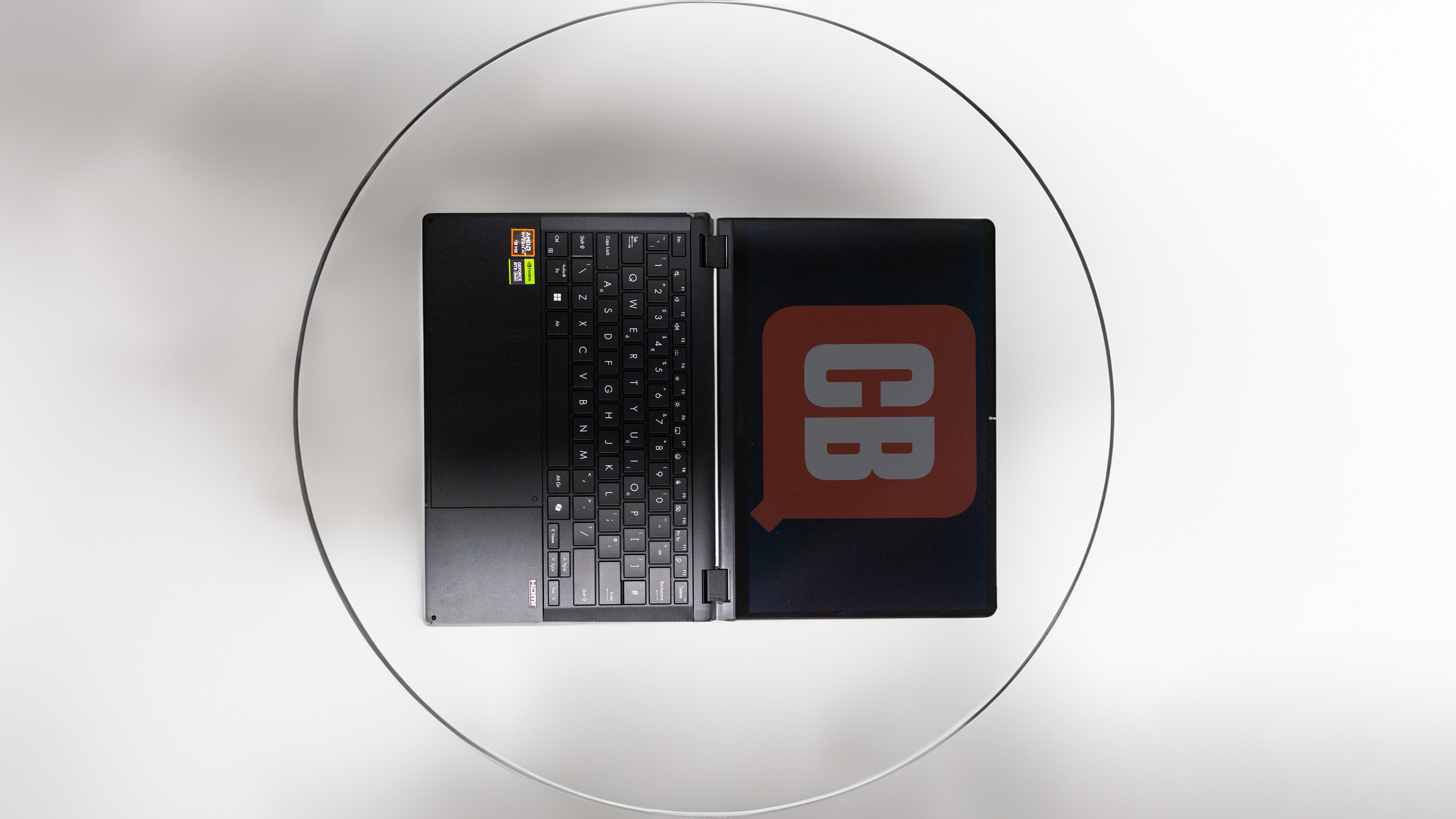
Compact. Powerful. With actually useful features. You can have one, maybe two if you’re prepared to pay, but to get all three in a laptop aimed at content creators is relatively unusual, because the increased cooling required for pixel-pushing or rendering power means a smaller chassis is ruled out, and two-in-one models often come with halfhearted processing options.
Enter the ASUS ProArt PX13. It’s anything but half-hearted, sporting the latest ‘AI’ processor from AMD and a beefy Nvidia GPU. It has ASUS’ special dial on its trackpad, and the touchscreen can be used with the stylus that ASUS helpfully includes in the box. There's even an optional matching backpack, with a main compartment that's described as 'voluminous' and which comes with an antimicrobial interior lining to help stop your laptop from getting stinky.
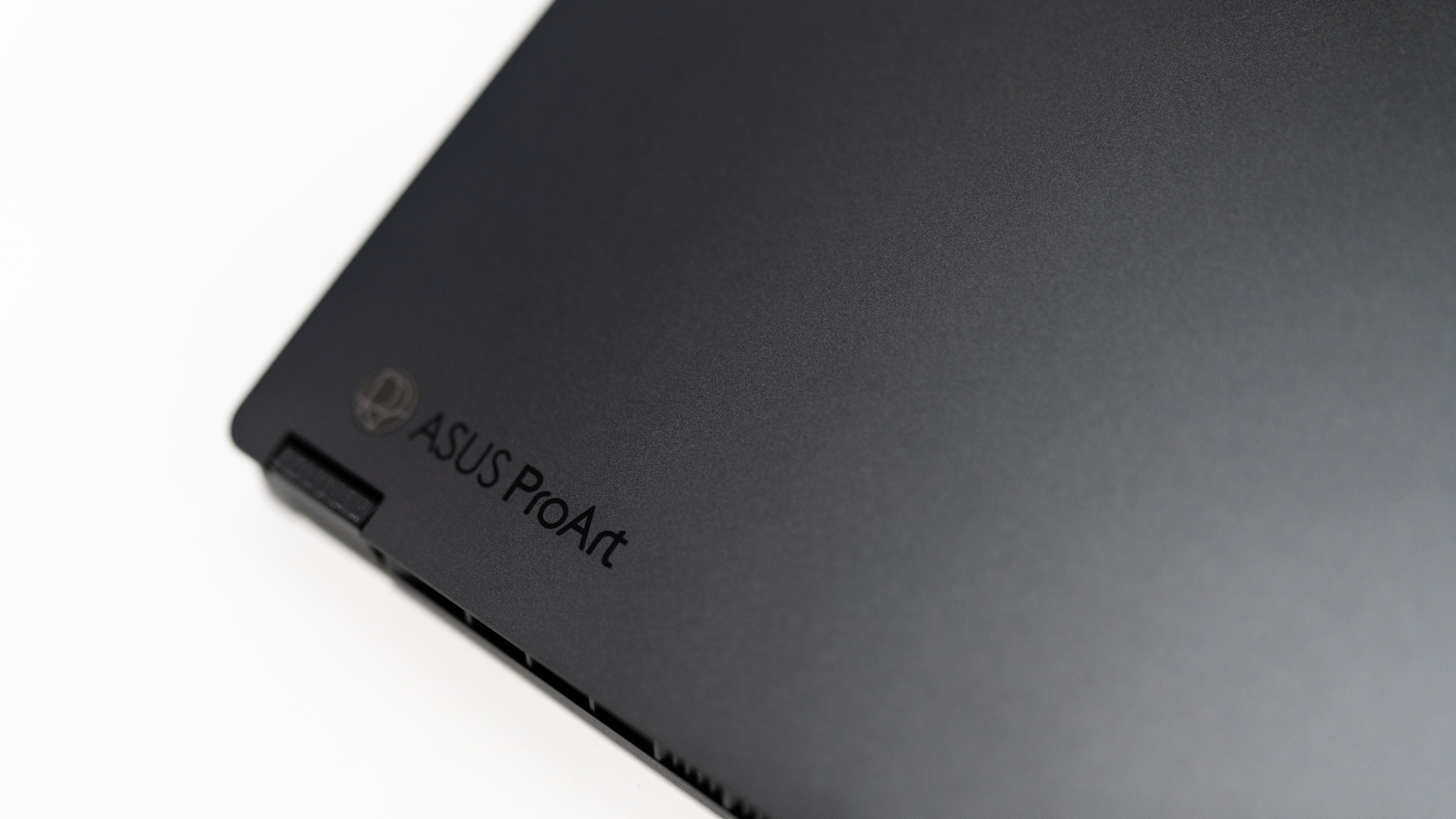
ASUS ProArt PX13: Key specifications
Design & build
The first thing you’ll do when you raise the lid of the ASUS ProArt PX13 for the first time is hover a finger over the top right of the keyboard, looking for the on switch. It’s not there. You’ll find it round the side, but decades of ingrained muscle memory mean you’ll probably keep doing the finger hover thing every time you want to switch it on.
This is just a quirk, the sort of thing that sets a laptop into the ‘lovable’ category rather than merely ‘competent’. It’s solidly built, stocky in its 13-inch frame, like a small weightlifter at the Olympics who goes on to hoist the equivalent of the average American over their head and gets rapturous applause.
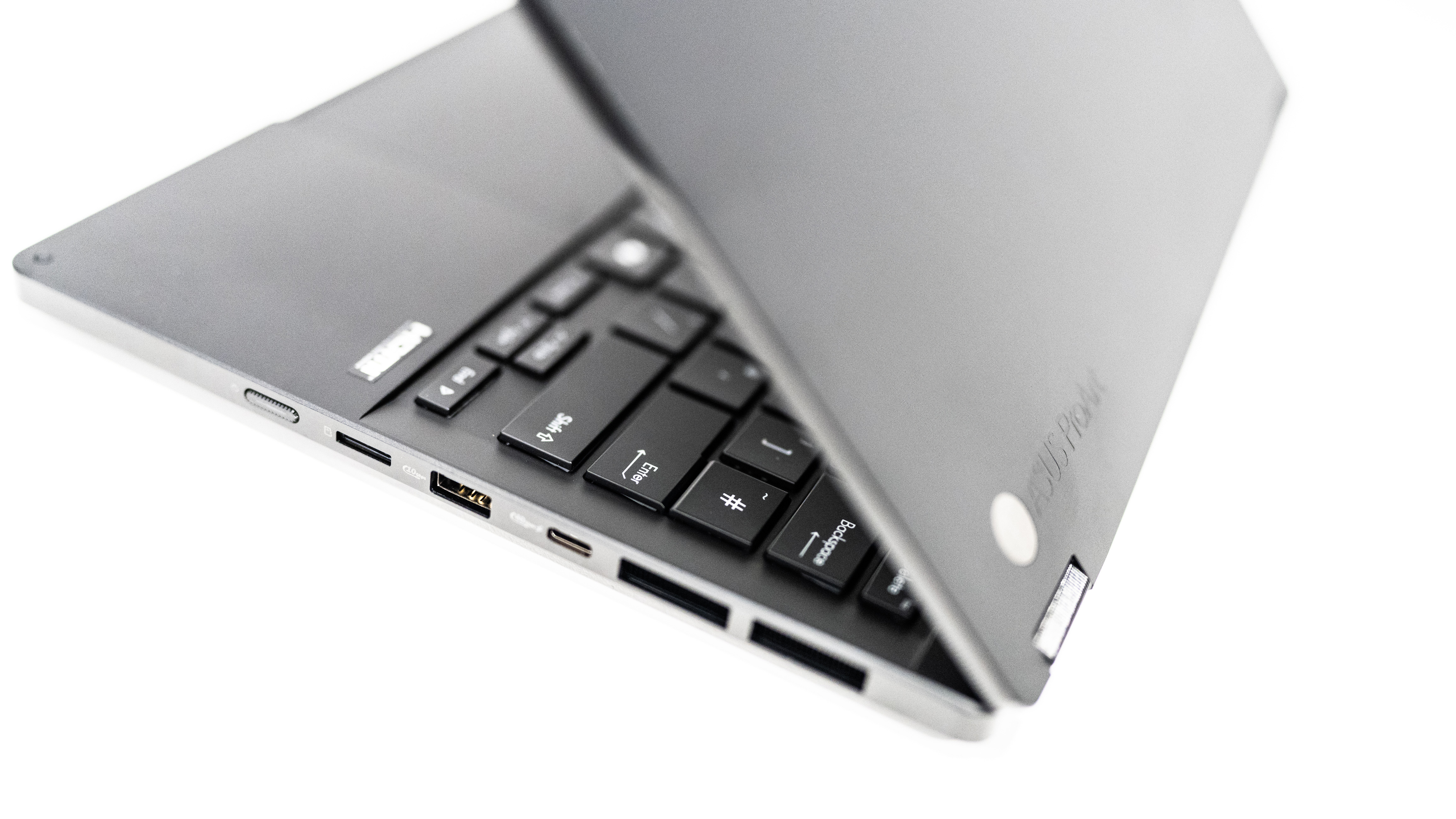
Otherwise, the design is conservative. There's no tapering edge that ends in a wedge shape, it’s slab-sided and has nicely rounded corners. There's not a lot of room here for flourishes, especially as this is a 2-in-1, so is expected to be used from multiple angles. You’re meant to be able to grip it from any direction, and you can. As you’re meant to pick it up, the metal casing is stiff, but if you’re holding it by the corner the touchpad won’t click. The chances of this being a problem when you can just touch the screen are probably minimal.
It’s not often a power plug gets a mention in our reviews, but ASUS has included a 200W brick here with a rectangular plug not a million miles away from MiniDisplayPort, only reversible. It should be able to charge through USB-C too, though it rejected the 60W tablet charger we tried.
The hinge is an important part of any convertible laptop’s appeal, and ASUS’ effort is smooth and puts up a bit of resistance, making it a simple thing to fold it back into tent mode and only taking a nudge further to make it a tablet, which rotates the display and disables the keyboard so you won’t be undertyping. Is that a word? It should be. In tablet mode, the PX13 is, naturally, thicker than something like an iPad Pro, but the benefits of being able to use Windows in this configuration outweigh any slight inconvenience - it makes drawing and painting, even note-taking, with the stylus more natural and makes you feel like you’re living in the future.
Features
USB 4 is standard on hot laptops now, so its presence here is expected. There are two of the little Type-C ports and just one Type-A, which might seem a little low, but you also get Wi-Fi 7, a full-size HDMI 2.1, the aforementioned power plug and a Micro SD card reader, so you’ll be able to keep them for data transfer if you need to rather than bunging them up with adaptors.
The OLED touchscreen is predictably excellent, though the 60Hz refresh rate is a little low by modern standards. It’s not going to be too much of a dealbreaker, as the chances are this machine will spend a good part of its life attached to an external screen via that HDMI 2.1 port. A 13-inch screen is good for portability, after all, but something larger is always better for actual work. We hunted it across open farmland with a colourimeter, finally catching up with it in a small copse of trees where we were able to extract the following information about its colour response: 100% sRGB, 96% Adobe RGB, 97% P3. It’s also capable of 357 nits of brightness with HDR switched on.
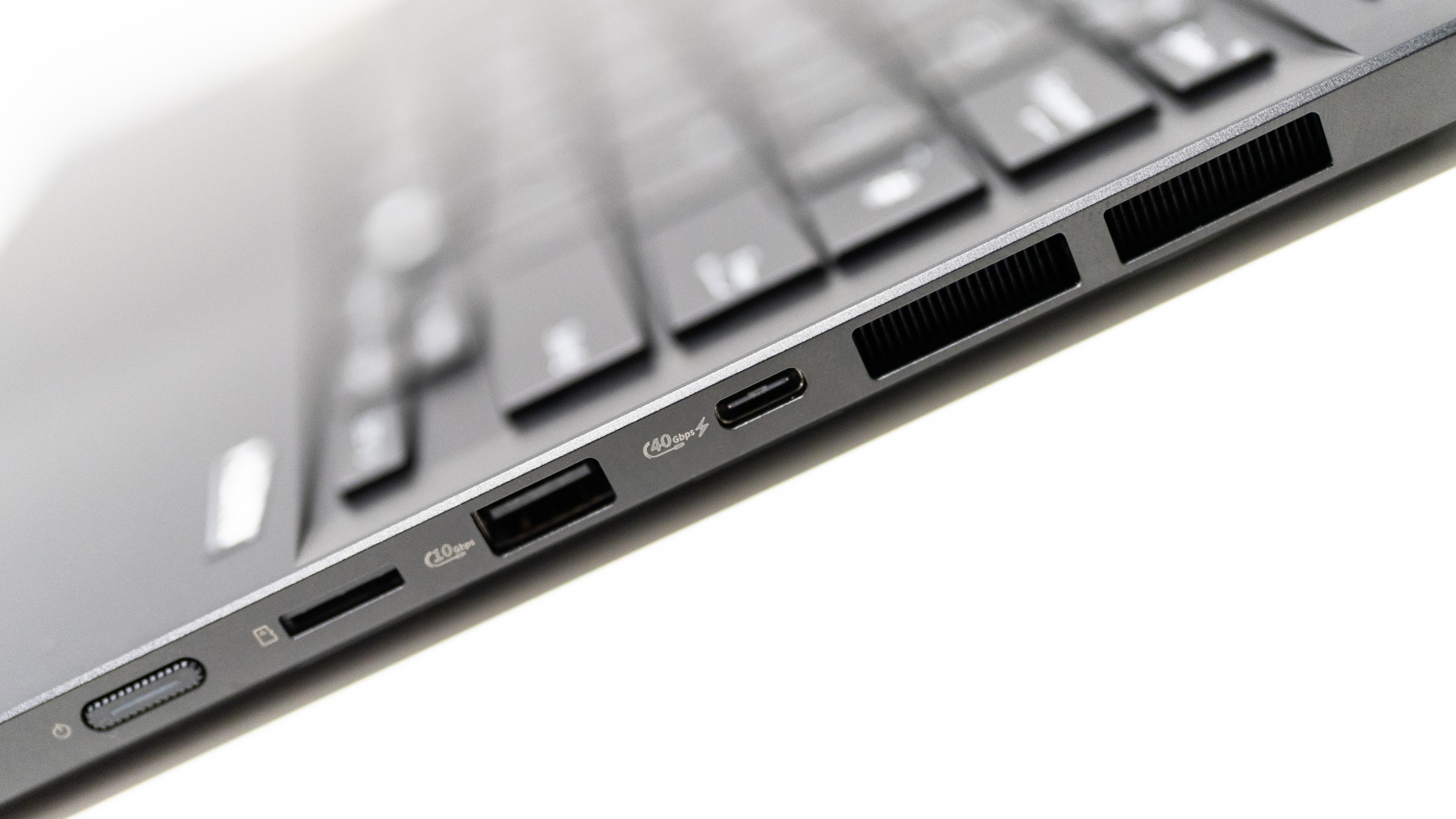
As a machine with an NPU you get the Copilot button on the keyboard and a large Copilot icon on the taskbar too. And as generative features are creeping further into creative apps all the time it’s nice to have, though with a powerful GPU like the 4070 onboard, it wouldn’t have had much trouble with Lightroom denoising or Photoshop generative fill anyway.
And while you’re in the Creative Cloud apps, or any others there's support for such as DAWs and 3D software, you can use the ASUS Dial on the trackpad to change things like brush sizes just by twirling your finger on it - and it’s all customisable. It’s not as refined a solution as the older ProArt machines’ physical dial (such as that on the ASUS ProArt Studiobook OLED) or the dial on Logitech’s Craft keyboard, but just having it there is nice, and combined with the stylus it makes it clear this is a laptop that’s designed for creative work rather than playing games.
Benchmark scores
Performance
The big selling point about the new Ryzen AI chips isn’t that they have a lot of cores on the latest architecture, which of course they do, but that they come with an NPU. For this Ryzen AI 9 model, it’s a 50TOPS unit, which boosts the overall processor’s AI rating to 80TOPS - more than the 40TOPS required to qualify as a Copilot+ PC (but it doesn’t, as that’s an ARM-processor-specific designation for now). Alongside this, you get four Zen 5 cores and eight of the smaller, cache-limited Zen 5C units, each of which supports multithreading for 24 simultaneous software threads with a boost clock up to 5.1GHz.
And well, it flies. The demanding Cinebench 2024 test from Maxon puts it just slightly behind the Intel Core i9-13900H chip seen in things like the Minisforum MS-01 mini workstation and the ASUS Zenbook 14X OLED laptop, but it’s way ahead of the Intel Core Ultra 7 155H in the HP Spectre X360 14 (2024) - a similar convertible laptop that’s just a tiny bit cheaper and relies on integrated graphics (so lags far behind this one in graphic-intensive tasks).
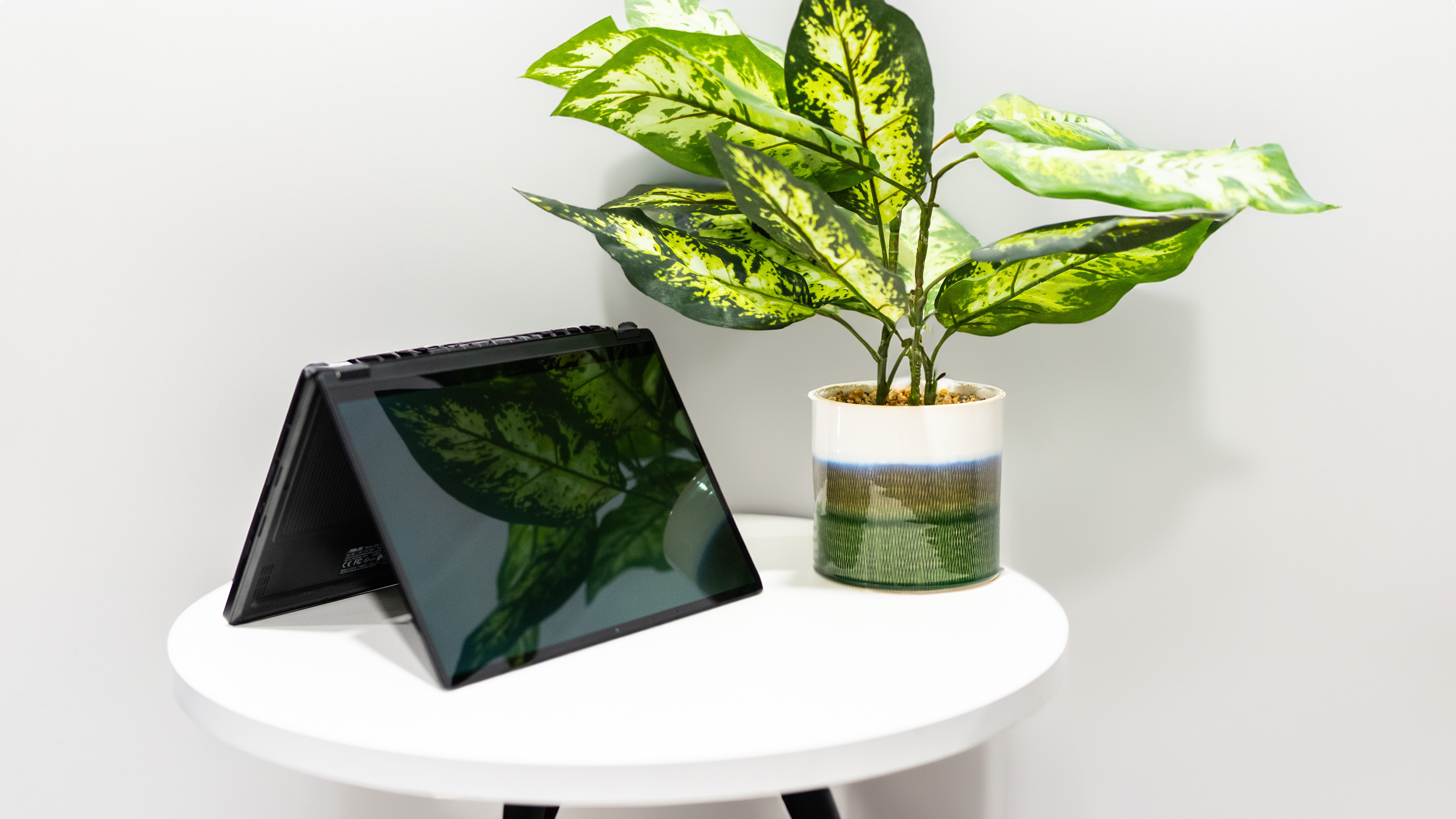
Over in Geekbench 6, it’s a similar story. The 13th-gen i9 falls by the wayside, and the Ryzen AI 9 has its sights on Intel’s 14th-gen chip, such as that found in the Acer Predator Helios 18. It’s close, but the i9-14900HX in the £3,600 laptop edges it. Meanwhile the Core Ultra 9 CPU in the HP Omen Transcend 14 is pretty much neck-and-neck with the AMD chip, ahead in some tests and behind in others.
All this goes to show that the Ryzen AI 9 is a potent competitor for the best Intel has to offer. The RTX 4070 is a mid-range GPU that’s popular among gamers for being a good balance of price and performance, and it’s certainly going to be up to the task of accelerating and rendering in creative apps. If you want to play Elden Ring too, then you’ll certainly be able to, especially if you swap out Nvidia’s Studio drivers for the Game Ready ones, to wring a few extra frames out of the chip in optimised titles.
Battery life is surprisingly short in our test, clocking just 3h 34m, but we expect you will be able to extend this by swapping to the processor's integrated graphics chip when you don't need the 4070.
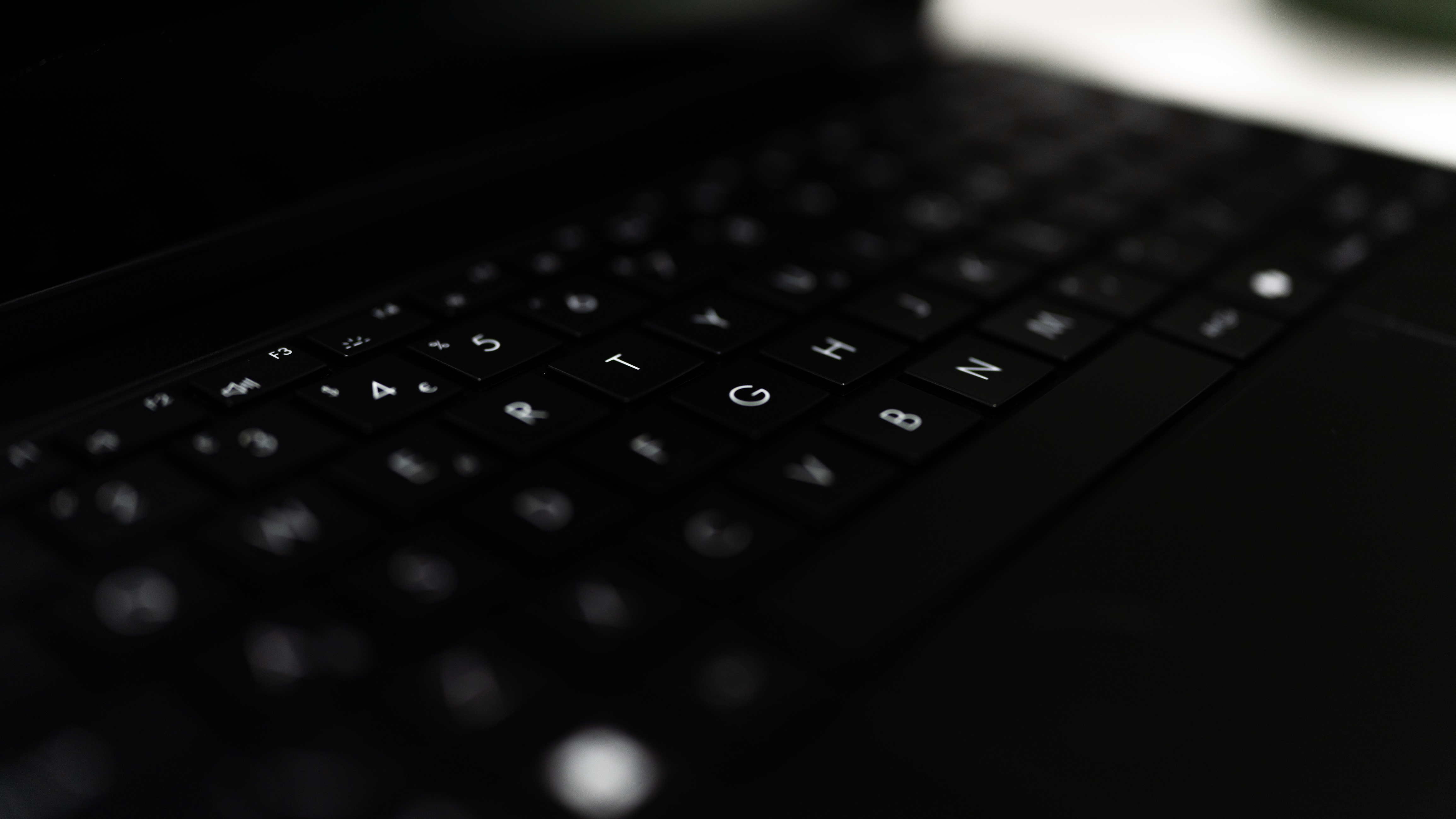
Price
Retailing for £/$1,999 on ASUS' own shop, this is a two-grand laptop and as such isn’t a purchase anyone is going to make lightly. So is it worth it, when you could get a MacBook Pro or a specced-out gaming laptop for the same price? The answer has to be yes, as it takes things a step further than many creative laptops we’ve reviewed. The GPU is a notch better, the new Ryzen AI 9 CPU has plenty of cores and can really get things done. Add to this the convenience of a 13in shell, the richness of the OLED screen and the 2-in-1 features, and you’ve got an excellent all-rounder that’s pointed directly toward content creation.
Who is it for?
Laptops that bring together powerful CPU and GPU chips, then back them up with plenty of RAM and fast storage, are the ideal computer for many applications. The ProArt may be aimed at creative power users - especially with that NPU - but it’s also going to be useful for playing games after hours, and you can take it with you to play movies in tent mode if you have to go on a trip. It’s the ideal machine for users who are glued to their laptops for many hours a day.
Should I buy it?
Buy it if:
• You want a compact, powerful machine
• You want a do-anything laptop
• The creative or AI features appeal
Don't buy it if:
• A bigger or faster screen is important
• You won’t use the 2-in-1 hinge
• You really want a Mac







